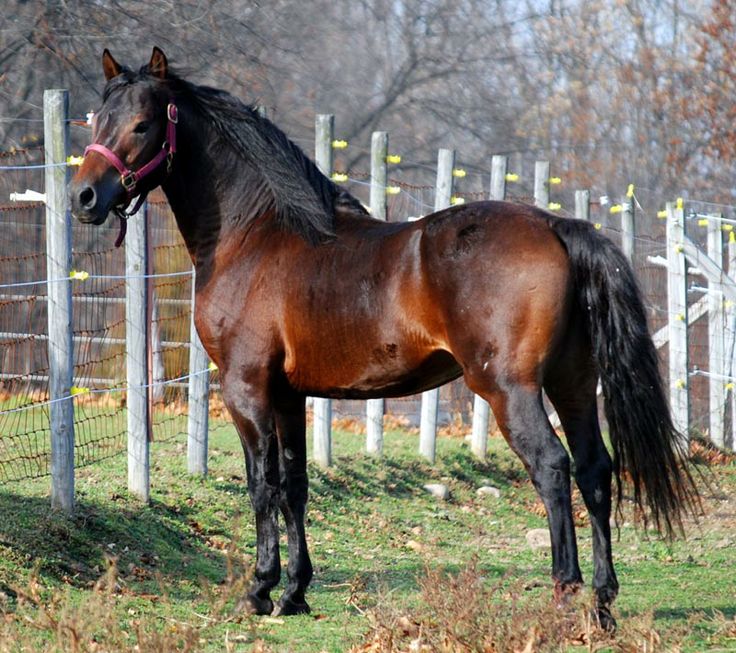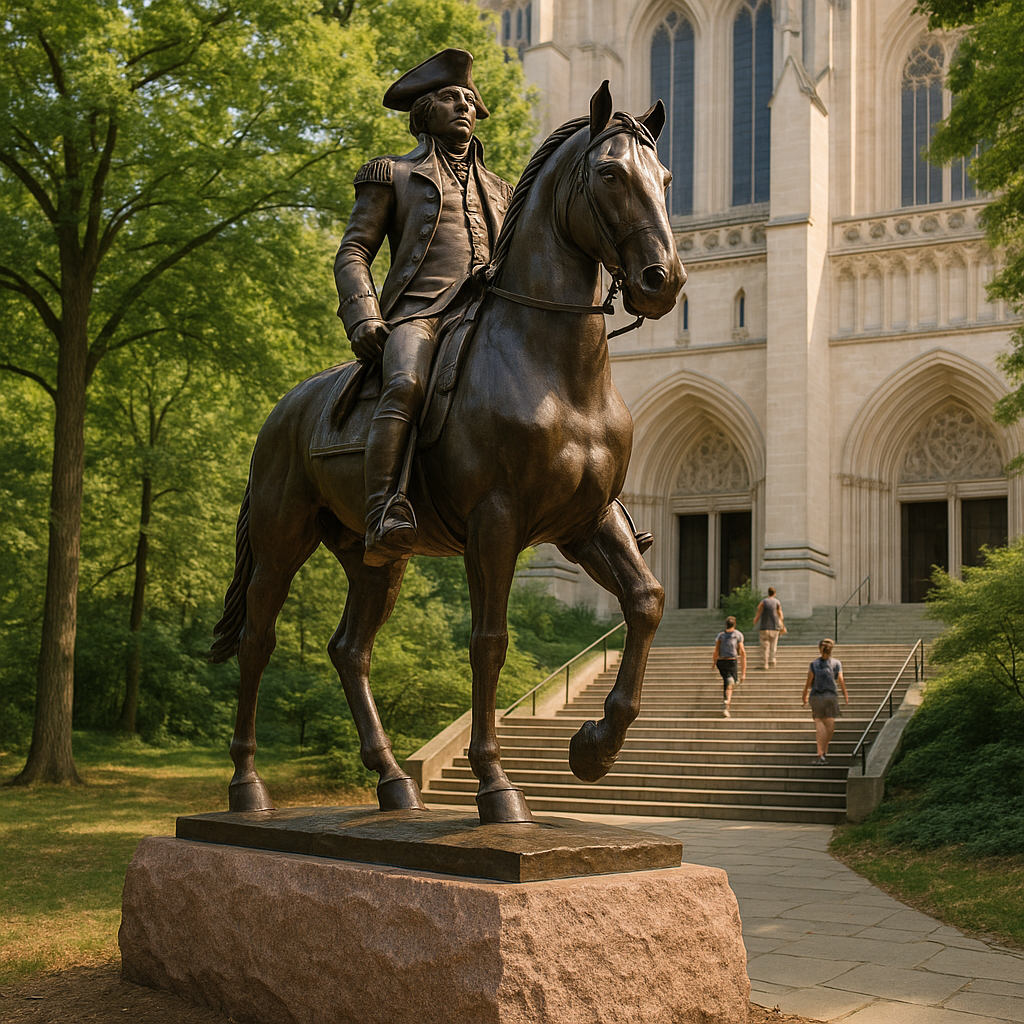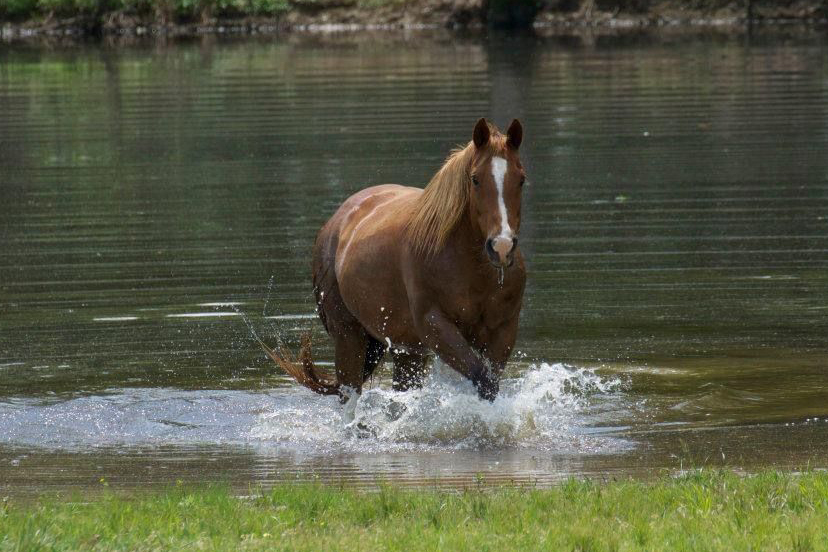Hoofbeats Of History: Washington, DC’s Equestrian Statues
When you think of Washington, DC, marble monuments and mighty memorials probably come to mind. But here’s a fun fact fit for our barn family: the nation’s capital is also home to more horse statues than any other U.S. city—over 30 equestrian monuments in total. From generals who shaped history to a French heroine who led armies, these statues aren’t just stone and bronze; they’re stories in stride.
Why Horse Statues Matter
Equestrian monuments have always symbolized leadership, loyalty, and lasting legacy. In DC, they anchor traffic circles, guard the Capitol, and line park pathways—reminders that horses have been woven into America’s story as much as the people riding them.
And while you might’ve heard the old myth that the horse’s raised hooves predict the rider’s fate—spoiler alert—it doesn’t hold up. The symbolism runs deeper, telling tales of courage, character, and community impact rather than battlefield endings.
3 Must-See Statues in DC
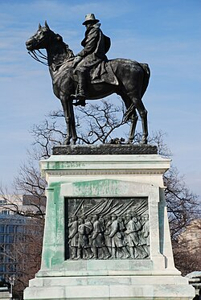
Ulysses S. Grant Memorial – Union Square
At the base of the Capitol, Grant sits calm and steady on his horse, even as dramatic cavalry and artillery scenes swirl below.
It’s the largest equestrian monument in the U.S.,
a striking balance of strength and stillness.
The quiet confidence in Grant’s pose contrasts the chaos around him, a reminder that true leadership often holds steady in the storm.
From every angle, the monument tells a story of resilience, resolve,
and the role horses played in carrying a
nation through conflict.
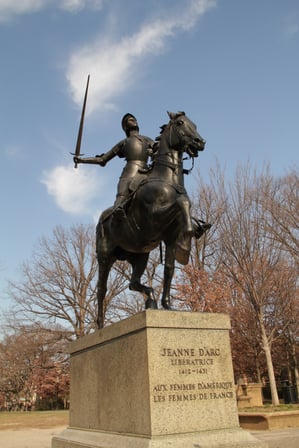
Joan of Arc – Meridian Hill Park
Sword raised, visor lifted, and spirit unstoppable - Joan of Arc rides boldly into history at Meridian Hill Park. This isn’t just another bronze on a pedestal; it’s the only equestrian statue of a woman in all of Washington, DC. Dedicated in 1922 as a gift from French women to American women, the monument was more than art—it was a gesture of gratitude and solidarity forged in the wake of World War I. What makes this statue so striking is its sense of motion: Joan’s horse trots forward with energy, her sword gleams skyward, and her face - visor raised - shows determination without fear. For equestrians, Joan’s statue speaks volumes: it honors the partnership of horse and rider, celebrates women’s strength and leadership, and reminds us that horses don’t just carry history - they shape it.
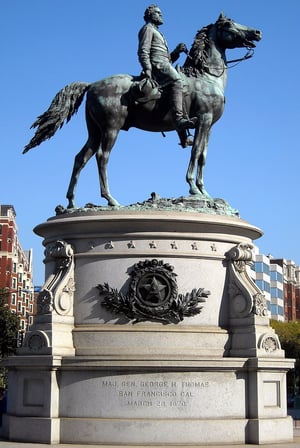
General George Henry Thomas – Thomas Circle
Nicknamed the “Rock of Chickamauga,”
Thomas earned his place in bronze for his pivotal role in Civil War battles. This 1879 statue is often praised as one of the most lifelike equestrian sculptures in DC -horse and rider captured mid-motion in remarkable detail.
The careful rendering of Thomas’s steady posture against his horse’s forward stride reflects both determination and discipline.
Placed in the heart of a bustling circle, the monument reminds passersby that strength in the saddle can anchor even the busiest crossroads.
Why It Resonates With Us
As equestrians, we know a horse is never “just a horse.”
Each statue captures the bond of horse and rider, the power of partnership, and the weight of history carried on four hooves.
So whether you’re strolling through DC or scrolling through history online, these statues are a reminder: horses don’t just carry riders—they carry stories.
Click on Images below for more Hoofbeats of History. Check back for more!


